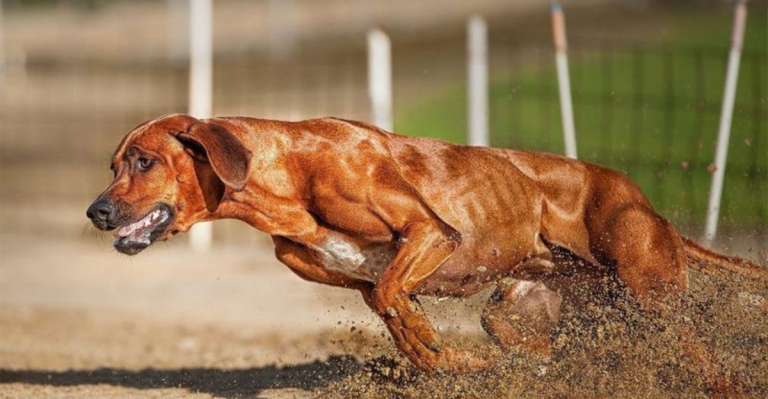15 Dogs That Get Anxious When Left Alone

No dog likes being left alone, but some take it to a whole new level. The moment you grab your keys or put on your shoes, these pups start pacing, whining, or howling like the world is ending. If you’re not careful, you might come home to chewed-up furniture or a door that’s been scratched to bits. Here are 15 dogs that just can’t handle being away from their favorite person—you.
Cockapoo

Bred for companionship, the Cockapoo thrives on human interaction. When left alone, this intelligent mix of Cocker Spaniel and Poodle can develop severe anxiety. Without mental stimulation, destructive behaviors emerge, which makes training essential for independent confidence.
Golden Retriever

Golden Retrievers form deep bonds with their owners. This devotion makes them prone to separation anxiety. Historically bred as hunting companions, they crave engagement. Otherwise, destructive chewing may follow. Plus, regular exercise and enrichment activities help ease their stress when left alone.
Cavalier King Charles Spaniel

Born to be a companion, the Cavalier breed struggles when separated from his favorite person. This breed often whimpers or scratches at doors when left behind. They require gentle training from an early age to learn that alone time is not abandonment, preventing excessive distress.
Bichon Frise

The Bichon Frise thrives on attention. Historically, these cheerful dogs performed in circuses, constantly surrounded by people. Left alone, they resort to barking, digging, or even self-harm. A structured routine and interactive toys can mitigate their clingy behavior and keep them calm.
Border Collie

Border Collies need a job to do, as their sharp intelligence and high energy make boredom unbearable. When left alone without a task, they resort to destructive habits like furniture shredding. Most importantly, herding breeds, in general, demand mental challenges to stay balanced.
Chihuahua

Despite their tiny size, Chihuahuas have massive personalities—and attachment issues. This breed’s tendency to shadow their owners means solitude feels unbearable. Hence, building confidence with independence training reduces their likelihood of barking frantically when left alone.
Cocker Spaniel

Originally bred for retrieving, Cocker Spaniels need human interaction. When left alone, they can develop habits like compulsive chewing or howling. That’s why anxiety can manifest physically, with drooling and pacing becoming common signs.
French Bulldog

French Bulldogs, with their charming yet stubborn nature, find solitude especially difficult. Left alone too long, they may refuse to eat or display nervous licking. Introducing self-soothing techniques, such as slow feeders and soft music, helps establish a sense of security in their owner’s absence.
German Shepherd

Stubborn yet deeply attached to their owners, French Bulldogs can exhibit extreme stress when left alone. Many paces frantically, lick their paws excessively, or refuse food. Providing a structured environment with reassuring background noise can help mitigate their anxiety.
Havanese

The Havanese, Cuba’s beloved lapdog, despises solitude. These affectionate dogs suffer from “Velcro dog syndrome,” always wanting to be near their owners. It is better to teach them to enjoy solo activities, like working on treat-dispensing toys, which can ease their anxiety.
Italian Greyhound

Slender and sensitive, Italian Greyhounds crave warmth—both physical and emotional. Their anxious nature makes separation difficult. Gradual departures and positive reinforcement training help foster independence while keeping stress levels low.
Labrador Retriever

Labs may appear confident, but they easily suffer from separation anxiety. Their nervousness often leads to excessive chewing, hyperactivity, or whining. Leaving them with durable chew toys and practicing brief absences can help curb their tendency to panic when left alone.
Maltese

Maltese dogs form good bonds with their owners, and their affectionate nature means they thrive on constant companionship, and long periods alone can lead to excessive barking, destructive behavior, or even depression. Since they were bred as companion dogs, solitude can feel overwhelming for them.
Pomeranian

Pomeranians may look like tiny fluffballs of confidence, but leave them alone too long, and they’ll turn into dramatic little divas. These pint-sized attention seekers don’t just miss you—they mourn your absence with nonstop barking. Their world revolves around their humans, and they expect the same in return.
Vizsla

If there were an Olympic event for clinginess, the Vizsla would take gold every time. These “Velcro dogs” need their owners, preferably within arm’s reach at all times. They thrive on human interaction and can turn into nervous wrecks without it. Hence, be prepared for a shadow that follows you everywhere.






